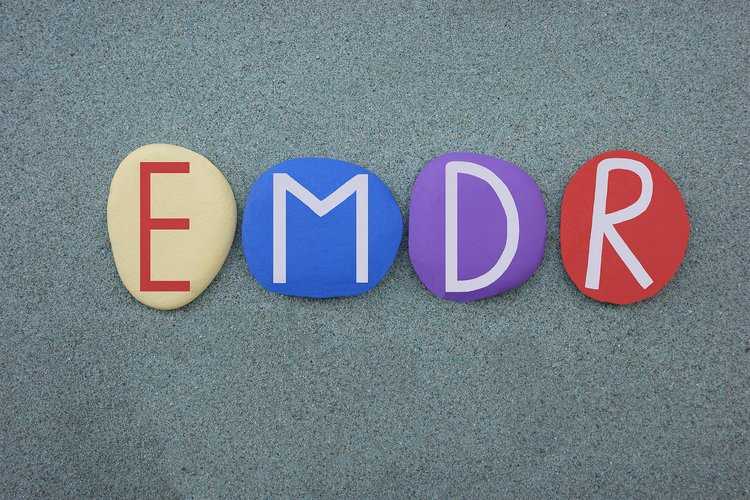Anxiety, an emotion most of us experience at some point in our lives, can become overwhelming for some, casting a shadow over their daily routines, relationships, and overall quality of life. While various therapeutic approaches offer solace to those battling anxiety, Eye Movement Desensitization and Reprocessing (EMDR) stands out due to its unique approach and rapid results. In this blog, we’ll delve deep into how EMDR functions, its efficacy for anxiety, and how it might be the therapeutic solution you or a loved one has been seeking.
Contents
Does EMDR Work With Anxiety?
 Yes, EMDR (Eye Movement Desensitization and Reprocessing) has been found effective in treating various forms of anxiety. Originally developed to address trauma and post-traumatic stress disorder (PTSD), its applicability has expanded to treat other psychological disorders over the years. EMDR for anxiety involves processing distressing memories or thoughts while the therapist guides the client in specific types of eye movements or other bilateral stimulations.
Yes, EMDR (Eye Movement Desensitization and Reprocessing) has been found effective in treating various forms of anxiety. Originally developed to address trauma and post-traumatic stress disorder (PTSD), its applicability has expanded to treat other psychological disorders over the years. EMDR for anxiety involves processing distressing memories or thoughts while the therapist guides the client in specific types of eye movements or other bilateral stimulations.
In the context of anxiety, whether it’s generalized anxiety disorder, panic disorder, social anxiety, or phobias, the underlying distressing memories or thoughts might be contributing to the symptoms. EMDR aims to target and process these root causes, thereby alleviating anxiety symptoms. However, as with all therapeutic approaches, individual results can vary. And it’s essential to work with a trained EMDR therapist to ensure the best outcomes.
What Are The Techniques Used In EMDR For Anxiety?
EMDR for anxiety utilizes a structured eight-phase approach, with each phase designed to prepare, process, and consolidate treatment gains. Here’s an overview of these phases and the associated techniques:
History-Taking and Treatment Planning
This involves understanding past traumas, significant life events, and the intricate ways these might be contributing to present anxiety. By charting out these events, the therapist can identify potential target memories or incidents for subsequent EMDR sessions. This phase lays the groundwork for the therapy, ensuring a clear roadmap for both the therapist and the client.
Preparation
Before diving into the core of EMDR, it’s essential for the client to feel safe and equipped. The therapist explains the EMDR process in detail, ensuring the client understands what to expect. Trust between the therapist and client is paramount. Additionally, clients are taught techniques to manage any distress they might experience during the process. For instance, visualizing a “safe” or “calm” place can offer an anchor of comfort if emotions become overwhelming.
Assessment
As the sessions progress, each target memory or incident is broken down further. The therapist and client collaboratively pinpoint the negative belief currently held due to that memory. For instance, a traumatic incident from childhood might lead to a deeply held belief like “I am not safe.” Alongside, they also identify the desired positive belief they’d like to instill by the end of therapy, such as “I am in control.”
Desensitization
Here, the essence of EMDR comes into play. With the distressing memory and associated negative belief in mind, the therapist facilitates sets of bilateral stimulations, usually through guided eye movements. As the client follows these movements, they process the distressing memory. After each set, the therapist checks in, noting changes, insights, or sensations. The process continues, with the intent to diminish the distress linked to the memory.
Installation
Once the distress has been processed, the focus shifts towards reinforcing the positive belief. The client, holding onto their desired belief, undergoes more sets of bilateral stimulations. This phase ensures that not only is the distress reduced, but a constructive, positive belief takes its place, acting as a buffer against future anxiety.
Body Scan
Our memories and traumas aren’t just mental — they often manifest physically. In this phase, the client tunes into their body, observing for any tension, discomfort, or unease related to the memory. If any such sensations exist, they are further processed using bilateral stimulations, ensuring a holistic healing approach.
Closure
EMDR can be intense, and not every session concludes with a fully processed memory. Thus, closure is vital. The therapist uses techniques, such as guided visualization, to help the client return to a stable, balanced state before leaving the session. Clients might also be encouraged to maintain a journal, noting down any experiences or feelings that arise between sessions.
Reevaluation
Every therapy session begins with a touchpoint. The therapist revisits the previously processed memories to ensure that the positive outcomes have been retained. They also look out for any new or resurfacing memories, ensuring that the client’s progress is on track and adjusting the treatment plan as necessary.
Throughout these phases, the bilateral stimulation — whether through eye movements, auditory tones, or tactile pulses — remains central to EMDR. This mechanism, believed to mimic the eye movements during REM sleep, is thought to be crucial in processing and re-framing distressing memories, providing relief from the shackles of anxiety.
What Are The Pros And Cons?
 EMDR (Eye Movement Desensitization and Reprocessing) has garnered both praise and criticism over the years. Here are the pros and cons of using EMDR for anxiety and other conditions:
EMDR (Eye Movement Desensitization and Reprocessing) has garnered both praise and criticism over the years. Here are the pros and cons of using EMDR for anxiety and other conditions:
Pros of EMDR
- Rapid Results: Many individuals report significant relief from symptoms in fewer sessions compared to traditional therapies.
- Non-reliance on Talk Therapy: For those who have difficulty verbalizing their trauma or feelings, EMDR offers an alternative as it doesn’t solely rely on discussing or verbalizing the traumatic event.
- No Medication: EMDR is a drug-free therapy. This can be preferable for those who want to avoid the side effects or dependency risks associated with medication.
- Addresses Root Causes: Instead of only managing symptoms, EMDR aims to target and process the root causes of the distress.
- Holistic Approach: EMDR integrates elements of cognitive-behavioral, interpersonal, and body-centered therapies, offering a comprehensive approach to healing.
- Evidence-based: Numerous studies have shown EMDR to be effective, especially for PTSD. Its benefits are recognized by organizations like the American Psychological Association (APA) and the World Health Organization (WHO).
Cons of EMDR
- Emotional Intensity: The process can be intense and might bring up strong emotions or memories. This can be distressing for some individuals.
- Incomplete Processing: If a session ends before a distressing memory is fully processed, the individual might leave feeling unsettled.
- Not Suitable for Everyone: Individuals with certain conditions, such as dissociative disorders, or those with particular types of trauma, might need a modified approach or might not be suitable candidates for EMDR.
- Limited Research for Some Applications: While EMDR has robust research support for PTSD, studies on its efficacy for other conditions, including specific anxiety disorders, are still ongoing.
- Need for Specialized Training: Not every therapist is trained in EMDR. So, finding a qualified practitioner might be challenging in some areas.
- Skepticism: Some critics argue that it’s not the eye movements. However, the exposure and cognitive components of EMDR lead to its effectiveness. Ultimately, making it not essentially different from other forms of cognitive-behavioral therapy.
It’s essential to remember that individual experiences with EMDR can vary widely. While many find it transformative, others might not derive the same benefits. As with any therapeutic approach, it’s crucial to consult with a trained mental health professional to determine the most appropriate treatment for one’s specific needs.
How Long Does It Take For EMDR For Anxiety To Work?
 The efficacy of EMDR (Eye Movement Desensitization and Reprocessing) and the time it takes to work can vary considerably based on individual factors. For some, relief can be experienced within just a few sessions, especially if the anxiety is linked to a single, specific traumatic event. In these cases, individuals might notice significant reductions in their anxiety symptoms relatively quickly, sometimes in as few as three to five sessions.
The efficacy of EMDR (Eye Movement Desensitization and Reprocessing) and the time it takes to work can vary considerably based on individual factors. For some, relief can be experienced within just a few sessions, especially if the anxiety is linked to a single, specific traumatic event. In these cases, individuals might notice significant reductions in their anxiety symptoms relatively quickly, sometimes in as few as three to five sessions.
However, for those with chronic anxiety or anxiety stemming from multiple or complex traumas, the treatment process can be longer. A series of sessions might be needed to address and process each distressing memory or traumatic event contributing to the anxiety. While the exact number of sessions can vary, it’s not uncommon for treatment to extend over weeks or even months in these instances.
It’s crucial to maintain open communication with the therapist about progress and any changes in symptoms. This will help to ensure a tailored approach that best meets the individual’s needs.
Conclusion
EMDR for anxiety presents a unique and evidence-based approach by targeting its root causes in distressing memories. While its rapid results have transformed lives, it’s essential to recognize that individual experiences can vary. As with any therapeutic intervention, success hinges on a combination of the method’s efficacy, the therapist’s expertise, and the individual’s unique circumstances and commitment.
Those exploring EMDR as a potential solution should consult with trained professionals, ensuring they embark on a path that resonates with their healing journey. If you are looking for affordable Online Therapy TherapyMantra can help: Book a trial Online therapy session


